Relax, this isn't a blog for braniacs! I just want to share our funky natural friends with the world and maybe learn you something along the way :)
Don't wanna be here? Send us removal request.
Link
Insects are criminally underrated animals in many ways, including their behavioral complexity.
While applying human intelligence standards to animals is not correct or even sensible, based on current research the bugs with the most complex problem-solving abilities appear to be bees, ants, and cockroaches.
“Without exaggerating, the honey bee is capable of advanced symbolic communication, language, facial recognition, number use, observation and mimicry, understanding of rules, and high-level problem-solving. They are, in some senses, significantly smarter than many mammals.”
41 notes
·
View notes
Text
The Velvet Worm- not as soft as it sounds.
Like many over these past few months of lockdown, I have found the call of the natural world a taunting ghost disrupting my attempts to settle into the routine of being indoors. All I wanted was for something to transport me out of my bedroom and into vast deserts or thick jungles- but the flower aisle on my weekly supermarket trips would has had to do.
An area of solace, a safe haven from monotony, came in the form of my personal discovery of a fantastic, albeit spineless, little beast: the velvet worm.

As I discovered watching the beautifully shot Netflix documentary Our Planet, these Panarthropods are not only funky looking, practically unchanged since the Cambrian and highly social (I KNOW RIGHT? SOCIAL WORMS??), they have a feeding mechanism which blew my mind so much that I must have lost at least three friends because I just wouldn’t shut up about it.

Glue. Webs. How cool is that?
The velvet worm hunts only by night, sneaking up in a stealthy, wormy way, to avoid detection by predators, then shoots glue webs out of glands on the sides of its face which harden, trapping the prey so the worm can take its time lumbering over to inject it with saliva. This saliva essentially digests the prey inside, so the worm can simply wait and then enjoy its fresh bug smoothie.
15 notes
·
View notes
Photo








Aspicilia filiformis
God I love that the description I found for this lichen as “creeping.” Creeping suggests movement–and considering how sloowwwly lichens grow, it might just be the slowest creep ever. A. filiformis grows in terete, filiform lobes in tangled mats on detritus, soil, and old grass mounds. The surface is brown, gray-green or olivaceous, turning black toward the forked lobe tips (described as looking like little snake tongues which is so precious). Apothecia are rare and small, with a flat or slightly sunken dark reddish-brown or black disc. So far, this creepy, snakey pal has only been found in shrub-steppe and grassland habitats in the western U.S. One of my favorite ecosystems! Unassuming but teaming with a wealth of highly adapted life forms! Like A. filiformis, who I have probably seen before and just assumed they were a dead tumbleweed or something. Oops, sorry pal.
images: source | source
info: source
103 notes
·
View notes
Photo


[Species] | Horned grebe
The horned grebe (Podiceps auritus) is a comparatively small waterbird that is distributed throughout North America and Eurasia, there being two respective subspecies. In length it reaches 31 to 38 centimetres, its wingspan is 55 to 74 centimetres and it weighs approximately 300 to 570 gram.
In comparison to the breeding-plumage, the non-breeding plumage is rather dull and boring, being greyish-black and white. The cheeks, chest and belly are coloured in a pale white tone, whereas the back and crown are black.
The breeding plumage of the horned grebe has bright erectable horns (which is how the species has gotten its name), black fan-shaped cheek feathers and an overall red and black colour. The neck, flanks lores and upper chest are chestnut brown, while the crown and back are black. Males and females look very similar, but males are a bit larger and brighter.
The habitat changes with season, but horned grebes always live in either lakes, ponds, or the ocean. During the summer they greatly prefer lakes with some open water and a bit of marsh vegetation, whereas in the winter they mostly occur in oceans, and more recently some large lakes and reservoirs as well.
Much like their habitat, the diet of horned grebes also changes seasonally, but generally consists of aquatic insects, fish and crustaceans. In the summer insects, crustaceans, salamanders, leeches and small amounts of plant material make up the majority of their diet, but in the winter it is dominated by fish, with molluscs and some insects making up only a small part of their prey.
Like other species of grebe, the horned grebe also regularly swallows its own feathers, so much that its stomach usually contains a matted plug of them. Parents also feed their feathers to their chicks so that they get this plug early. This may function as a filter for fish bones, to hold them in the stomach until they can be fully digested.

The female lays 3 to 7 whitish or pale green eggs, which are incubated by both males and females. Almost immediately after hatching (which takes about 25 days) the young are capable of swimming, but usually ride on their parents back, even diving with them sometimes. Although the horned grebe usually has one only one brood in a year, that number can change and be up to two. If there are two broods it’s common for the chicks of the first brood to help raise and feed the second.
Due to a lack of solid data, it is difficult to say whether or not horned grebes are declining or not, but that is believed to be the case. Current population estimates suggest that there are about breeding 620000 individuals currently alive, about 250000 of which are in North America. The IUCN rates this species as Vulnerable.
Photo credits: Ed Rosack, Óskar Sigurmundason, Sindri Skúlason
81 notes
·
View notes
Text
sometimes I think about how red is the first color in the visible light spectrum to be absorbed in ocean water
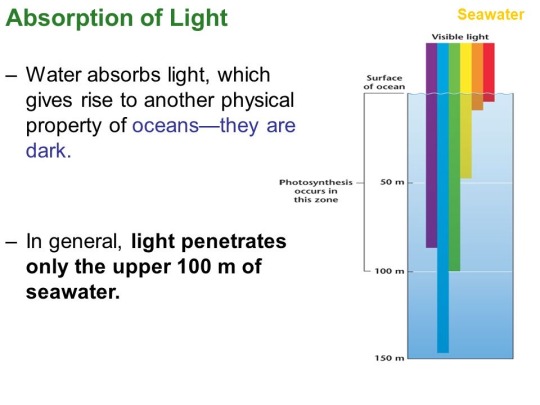
and how many deep-sea creatures evolved to be red as a stealth adaptation, making them near invisible when there’s little to no light present

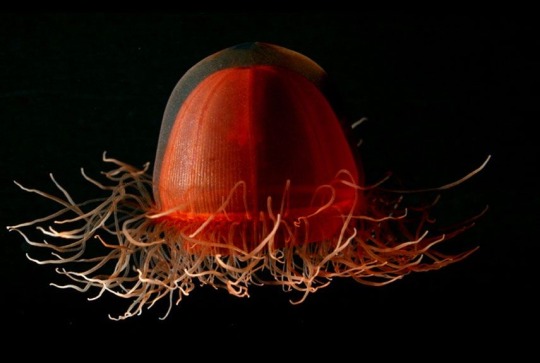

and it makes me think. If there’s never any visible light present in these animals’ lifetimes, if no ROV shines a little flashlight in depths that would otherwise not have light, would these animals ever get the opportunity to actually be red? that might be a stupid question.
imagine being a little deep sea creature and having no idea you’re red until something comes along and shines a light on you except you still wouldn’t be able to tell because you’re probably colorblind. anyway. I don’t know where I was going with this post
95K notes
·
View notes
Text
Shrimp Colors Are a Lie

Well, lie is a bit of a strong word, but scientists have known since 2014 that those special colors that mantis shrimp can see actually Aren’t A Thing.
Mantis shrimp (which aren’t a shrimp but a “stomatopod” which are more closely related to krill) have 12 types of color receptors in their eyes compared to our measly 3 receptors. We used to think this meant they could see a whole range of dazzling colors beyond our comprehension.
Some people were (rightfully) jealous.
However, it turns out that mantis shrimp probably have so many color receptors because they don’t blend colors the way we do. When you look at something purple, your red and blue receptors are strongly stimulated while your green receptors are not and your brain synthesizes this information into purple. When a mantis shrimp looks at something purple, they have a specific purple receptor that is stimulated.

Why this weird system? Probably because it is faster and more efficient. Mantis shrimp need to distinguish between prey species and react extremely quickly (some species can punch 50x faster than the blink of an eye), so they don’t have time to do the mental calculations to blend colors.
Not only is the Forbidden Shrimp Color Knowledge a sham, but mantis shrimp can actually see fewer colors than we can because they can’t distinguish as many shades between colors. They also can’t see those cursed Imaginary Colors.

Keep reading
34K notes
·
View notes
Text
Conservation-Induced Extinction

“Conservation-induced extinction” is certainly a strange term. Isn’t the entire point of conservation to prevent extinction?
Let’s start with the venerated conservation success story of the California condor. In 1987 there were only 22 California condors left in existence, and all 22 birds were brought into human care for the purpose of starting a captive breeding program that would eventually save the species from extinction.
As part of bringing the last California condors into human care, all 22 birds underwent anti-parasitic treatment. As a direct result, in the spring of 1987, Colpocephalum californici–a unique species of louse known to only host on the California condor–was driven to extinction.
It bears mentioning that this extinction was a result of negligence, not intentional destruction; it simply did not occur to the people running the California Condor Recovery Plan to account for parasite conservation. There is no evidence that the California condor louse was harmful to its host or that driving it to extinction was in any way helpful to the captive breeding program.
Now at this point you may be thinking, “Oh, well it was only a parasite, I don’t really care if they go extinct”. However, if you subscribe to the ecological notion that every scrap of biodiversity is precious, why is the California condor louse any less valuable than the California condor?
Keep reading
937 notes
·
View notes
Note
What is, respectively,the best horrible animal design
every living thing on earth is in a neverending game of Chicken with natural selection, staying juuuuust enough ahead of the curve to avoid extinction. this minimum-effort strategy breeds a LOT of weird-but-fairly-effective designs, but the Pipefish is objectively just pretty terrible.

they’re basically just straightened-out seahorses that get the worst of both worlds, lacking the seahorse’s strong grabbing ability while also being such a weak swimmer that they can’t deal with any kind of current at all!
they SUCK, is what I’m getting at here.

but you know what? they’re also POSTIVELY DELIGHTFUL.



pipefish come in a frankly astonishing array of colors, shapes, and sizes, and I frankly would not want to live in a world without them.
3K notes
·
View notes
Text
Giant katydid (Stilpnochlora couloniana) enjoying a piece of squash
Something neat about katydids that you can clearly see here is that they have ears in their front legs- that’s what those slits just below his elbows are.
(Florida, 2/17/21)
3K notes
·
View notes
Link
Scientists working off the western coast of Mexico say they have found a previously unknown species of whale.
Three beaked whales were spotted last month by a team of scientists working with the Sea Shepherd Conservation Society near the San Benito Islands, some 300 miles from the US border, according to a press release published Tuesday.
The team had set out to try to find out what kind of whales were making an unidentified acoustic signal previously recorded in the area.
Beaked whale experts working alongside Sea Shepherd’s scientific department managed to take photographs and video recordings of the three whales, and also recorded their acoustic signals using an underwater microphone.
Continue Reading.
12K notes
·
View notes
Photo
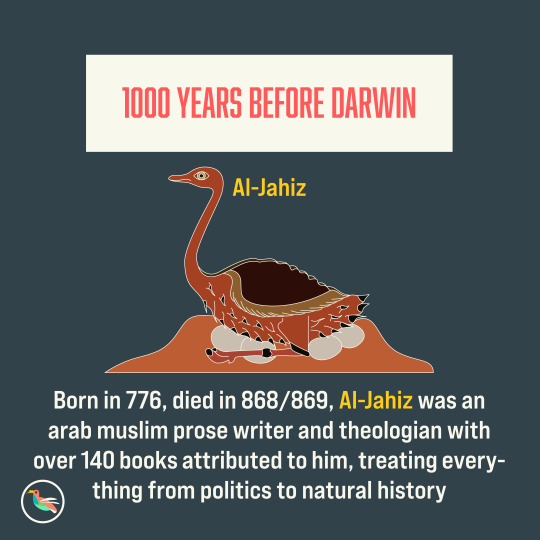

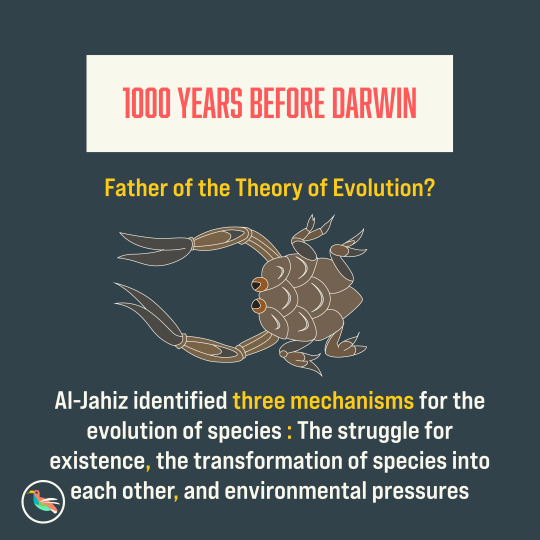
Special post for reaching 1000 followers on instagram!
While Darwin is often credited as the father of the Theory of Evolution, it’d be more precise to say that he was the father of the Theory of Evolution “by Natural Selection”.
Darwin’s genius was not in realizing that animals change over time, but in identifying the mechanisms by which these changes occur.
The idea that animals evolve over generations was proposed by a number of scientists and philosophers in various forms. And today, we will look at Al Jahiz, who proposed the idea some 1000 years before our English naturalist.
16K notes
·
View notes
Photo

I don’t give the shrimps junk food for 12 hours and they start high-risk feeding strategies already…
35K notes
·
View notes
Photo

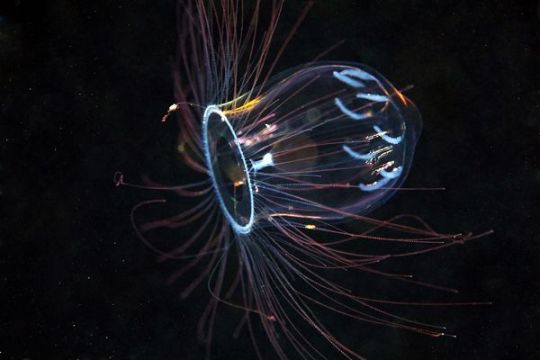
Pink Helmet
Aglantha digitale
The Pink Helmet is a mini hydromedusa that comes in a variety of vibrant colors. The tiny jelly is only 4 cm in size and is found towards the surface of the ocean. The purple and blue hues we see in its bell are caused by a phenomenon known as iridescence, when light strikes the jelly’s thin tissue at different angles (similar to what we see in a soap bubbles). It also has orange pigmentation near its mouth; this pigmentation helps attract prey and mask luminescence. Furthermore, females tend to be more colorful than males.
Photo credit: https://biolum.eemb.ucsb.edu/organism/pictures/aglantha.html
https://www.pinterest.com/pin/186899453255850798/
3K notes
·
View notes
Text
The Velvet Worm- not as soft as it sounds.
Like many over these past few months of lockdown, I have found the call of the natural world a taunting ghost disrupting my attempts to settle into the routine of being indoors. All I wanted was for something to transport me out of my bedroom and into vast deserts or thick jungles- but the flower aisle on my weekly supermarket trips would has had to do.
An area of solace, a safe haven from monotony, came in the form of my personal discovery of a fantastic, albeit spineless, little beast: the velvet worm.

As I discovered watching the beautifully shot Netflix documentary Our Planet, these Panarthropods are not only funky looking, practically unchanged since the Cambrian and highly social (I KNOW RIGHT? SOCIAL WORMS??), they have a feeding mechanism which blew my mind so much that I must have lost at least three friends because I just wouldn't shut up about it.

Glue. Webs. How cool is that?
The velvet worm hunts only by night, sneaking up in a stealthy, wormy way, to avoid detection by predators, then shoots glue webs out of glands on the sides of its face which harden, trapping the prey so the worm can take its time lumbering over to inject it with saliva. This saliva essentially digests the prey inside, so the worm can simply wait and then enjoy its fresh bug smoothie.
#biology#bio#biolove#worm#wormblr#science#sci#velvet worm#animals#nature#insects#natural#wordsofwisdom#earth#environment#ecology#animal#funky#gluewebs#spiderworm#like spiderman#but its a worm#student#a level biology#a level#uk#ilovenature#iloveworms
15 notes
·
View notes
Text
Hey there!!
I know I have no followers just yet but this is going to be a blog for all the biology I think is cool and anything else I learn on the way!
See ya soon :)
0 notes